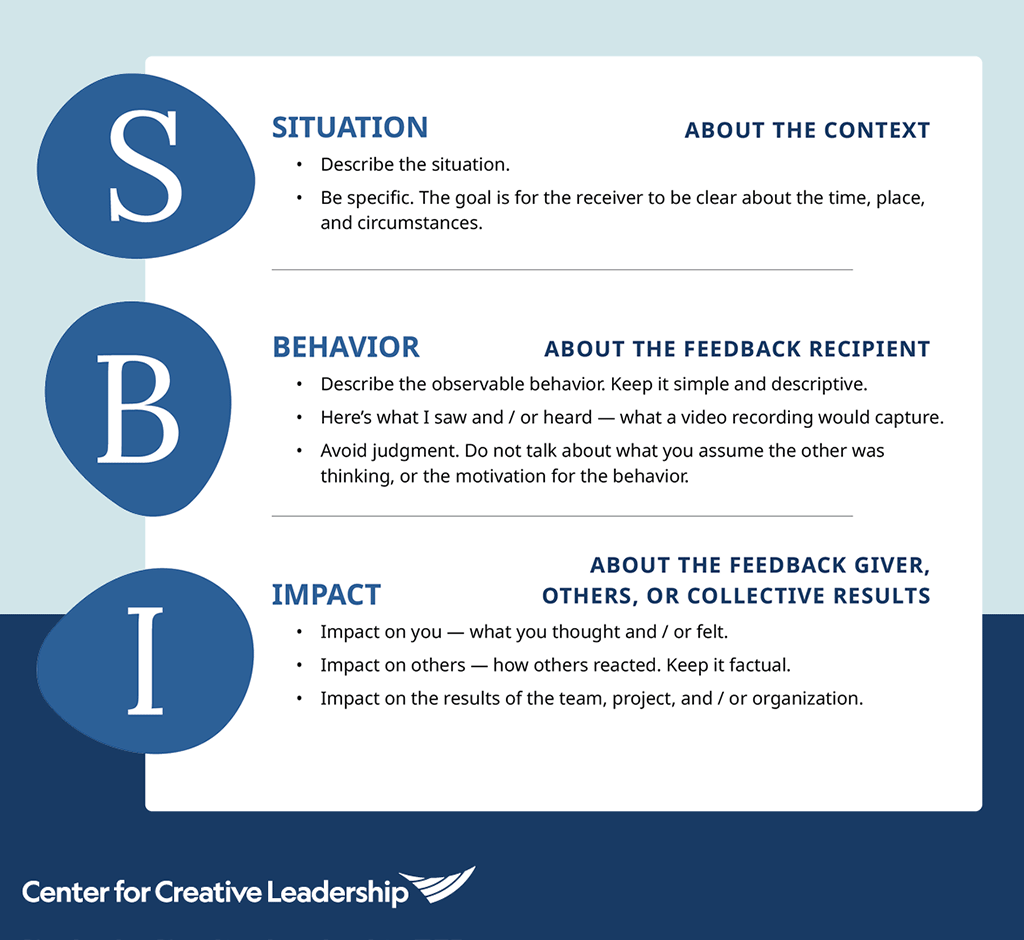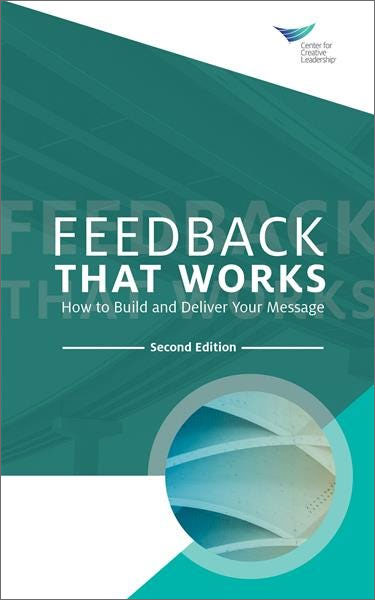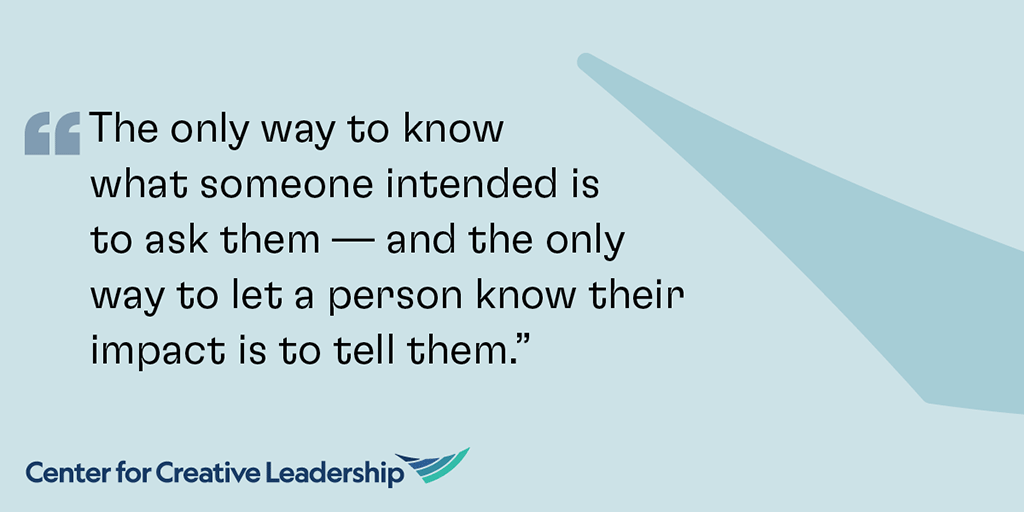How to Use Situation-Behavior-Impact (SBI)™ to Explore Intent vs. Impact
When somebody disappoints you, fails to deliver what you expected, or lets you down in some way, what do you do? If you’re like most people, you make assumptions that are usually not positive:
That guy is not a team player … he’s lazy … doesn’t care … just doesn’t get it.
And then you take action:
I’ll just find a workaround … get somebody else to do the work … rethink responsibilities … talk about him to someone else … initiate discipline.
We often don’t even realize that we create stories about people in our heads, especially when they disappoint us. This happens all the time. We see behavior, assume we know why the other person acted a certain way, and react based on those assumptions.
Many difficulties can be avoided by having a clarifying discussion. Though people usually intend to do the right thing, sometimes something gets scrambled or misinterpreted along the way, and the impact is far from what they intended.
The only way to know what someone intended is to ask them — and the only way to let a person know their impact is to tell them. These important conversations rarely happen, though, and we move through our days in a tangle of misperceptions and actions based on incorrect assumptions.
So, how do you have conversations to find out why a person chose to behave a certain way? We recommend closing the gap between intent and impact by using Situation-Behavior-Impact (SBI)™.
What Does Situation-Behavior-Impact Mean?
Our research-backed, widely-recognized model for delivering feedback, Situation-Behavior-Impact, or SBI, is proven to reduce the anxiety of delivering feedback and also reduce the defensiveness of the recipient. Using this model can help both parties become more comfortable with the feedback process — and our research shows that employees rate managers as more effective when they give feedback more frequently.
The Situation-Behavior-Impact method is simple and direct: You capture and clarify the Situation, describe the specific Behaviors observed, and explain the Impact that the person’s behavior had on you. The SBI Feedback Model is helpful when holding talent conversations with employees.

How Can You Use Situation-Behavior-Impact With Team Members?
A 3-Part Model
SBI can be used for giving different types of feedback, as in these examples:
1. Situation:
Describe the specific situation in which the behavior occurred. Avoid generalities, such as “last week,” as that can lead to confusion.
- Example: “This morning at the 11 am team meeting…”
2. Behavior:
Describe the actual, observable behavior. Keep to the facts. Don’t insert opinions or judgments.
- Example: “You interrupted me while I was telling the team about the monthly budget,” instead of “You were rude.”
3. Impact:
Describe the results of the behavior. Because you’re describing exactly what happened and explaining your true feelings — not passing judgment — the listener is more likely to absorb what you’re saying. If the effect was positive, words like “happy” or “proud” help underscore the success of the behavior. If the effect of the behavior was negative and needs to stop, you can use words such as “troubled” or “worried.”
- Example: “I was impressed when you addressed that issue without being asked” or “I felt frustrated when you interrupted me because it broke my train of thought.”
The success of Situation-Behavior-Impact is enhanced when the feedback, which is one-way, is accompanied by an inquiry about intent, which makes the conversation two-way.

Providing feedback to others about their performance is a key developmental experience. Learn how to make the feedback you give even more effective so that others can benefit from your message.
Build Trust by Exploring Intent vs. Impact With SBII
Extending the Model to Include Intent
Inquiring about intent prevents us from veering off in the wrong direction based on faulty assumptions. Extending the Situation-Behavior-Impact (SBI) tool for delivering feedback to be Situation-Behavior-Impact-Intent (SBII) allows you to have a conversation to address what was behind a person’s actions. What were their original intentions?
4. Intent:
Ask about the person’s original intentions. This enables you to draw attention to the gap between intent vs. impact.
- Example: “What were you hoping to accomplish with that?” or “What was going on for you?”
A conversation that clarifies intent vs. impact builds trust and understanding. Simple solutions usually follow. Inquiring about intent is also where good coaching starts.
When you inquire about intention, motivation, or what’s behind an action, you’re essentially in a coaching conversation — one that can make a positive difference well before a performance review or disciplinary conversation. Learn more about being a leader-coach and how to have a coaching conversation.
Ready to Take the Next Step?
Upskill your team’s ability to give effective feedback using SBII with a customized learning journey for your leaders using our research-backed modules. Available leadership topics include Conflict Resolution, Emotional Intelligence, Feedback That Works, Listening to Understand, and more. Or, build coaching skills to better explore intent vs. impact in our coach training for leaders, Better Conversations & Coaching.











